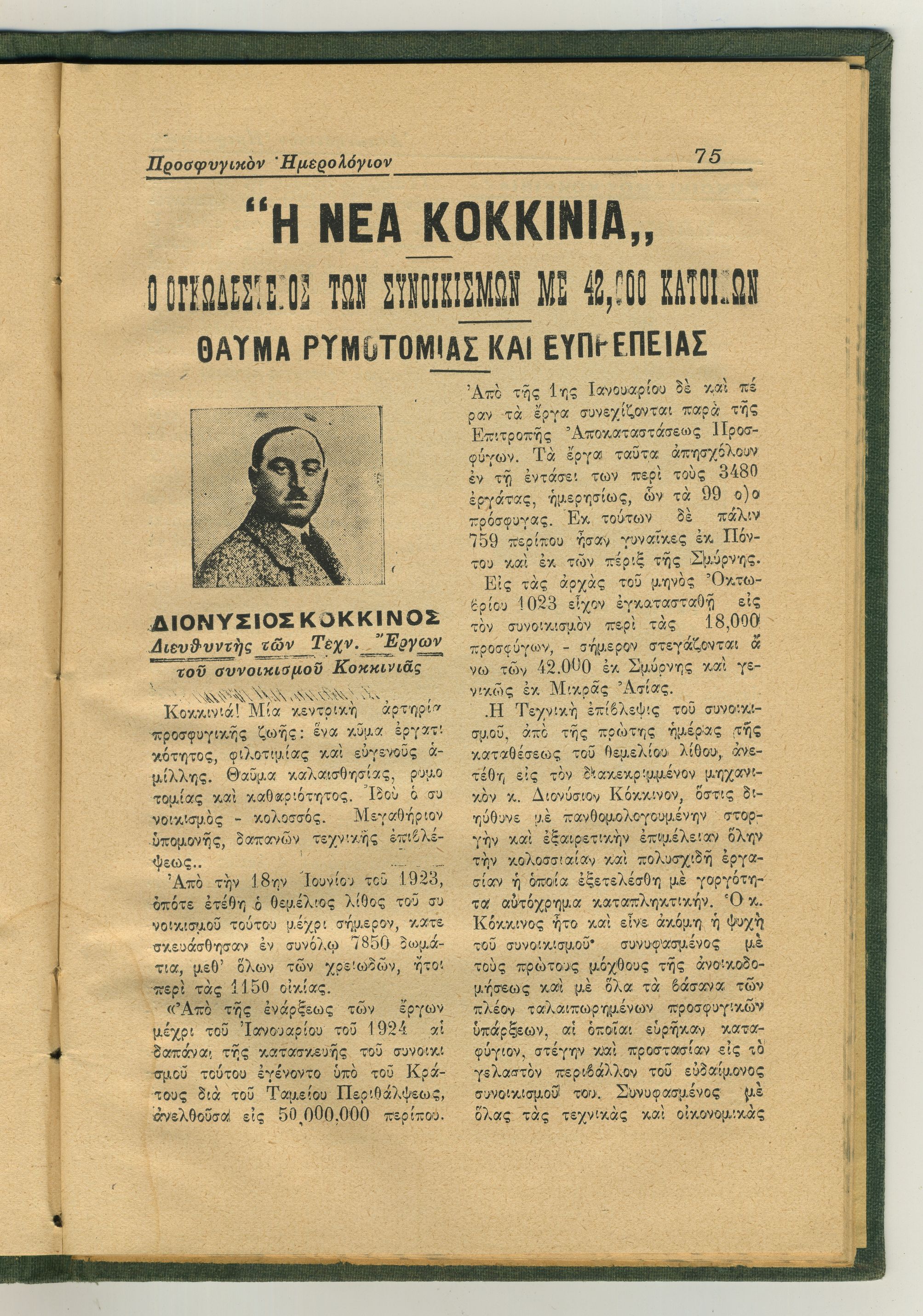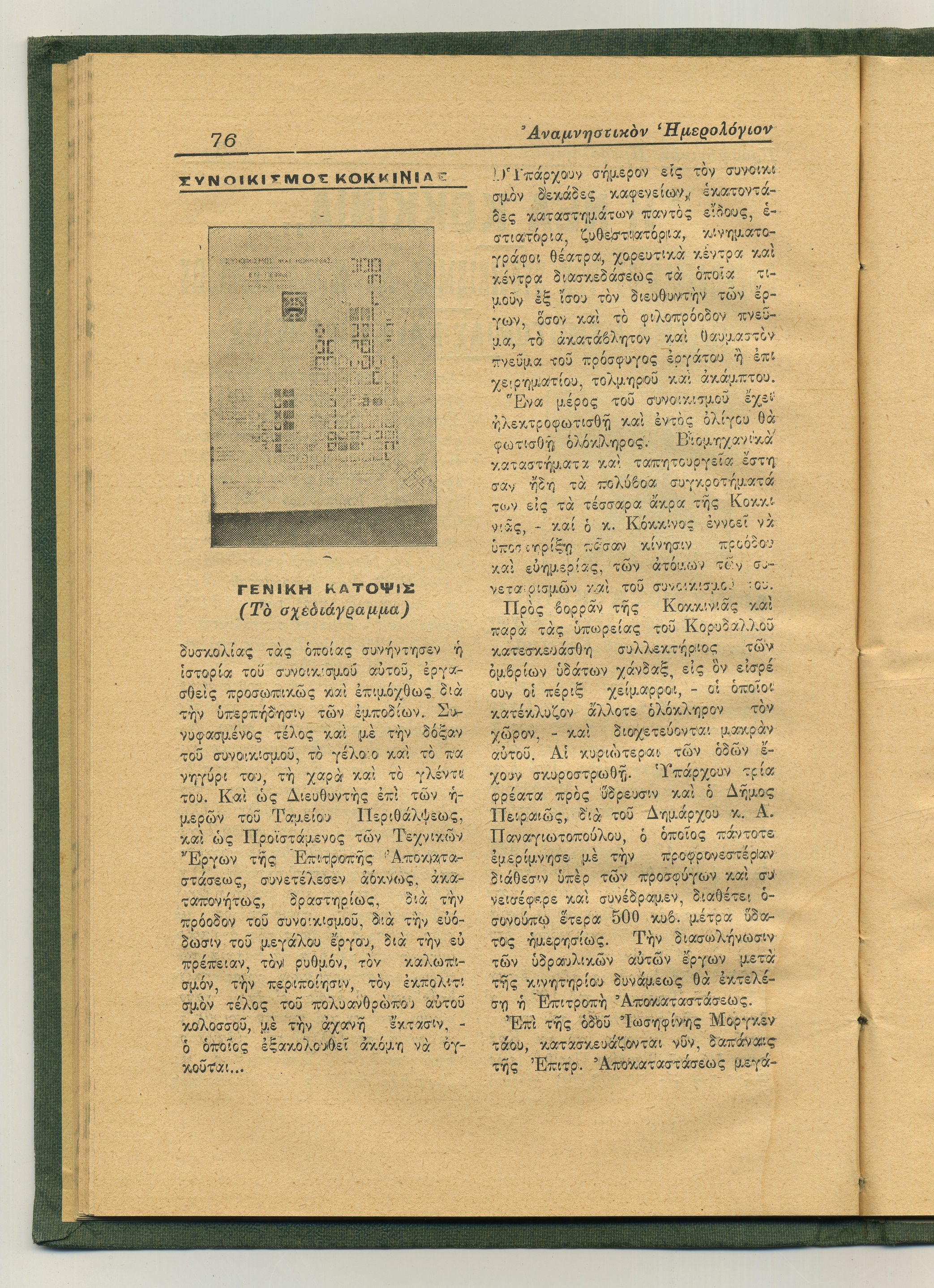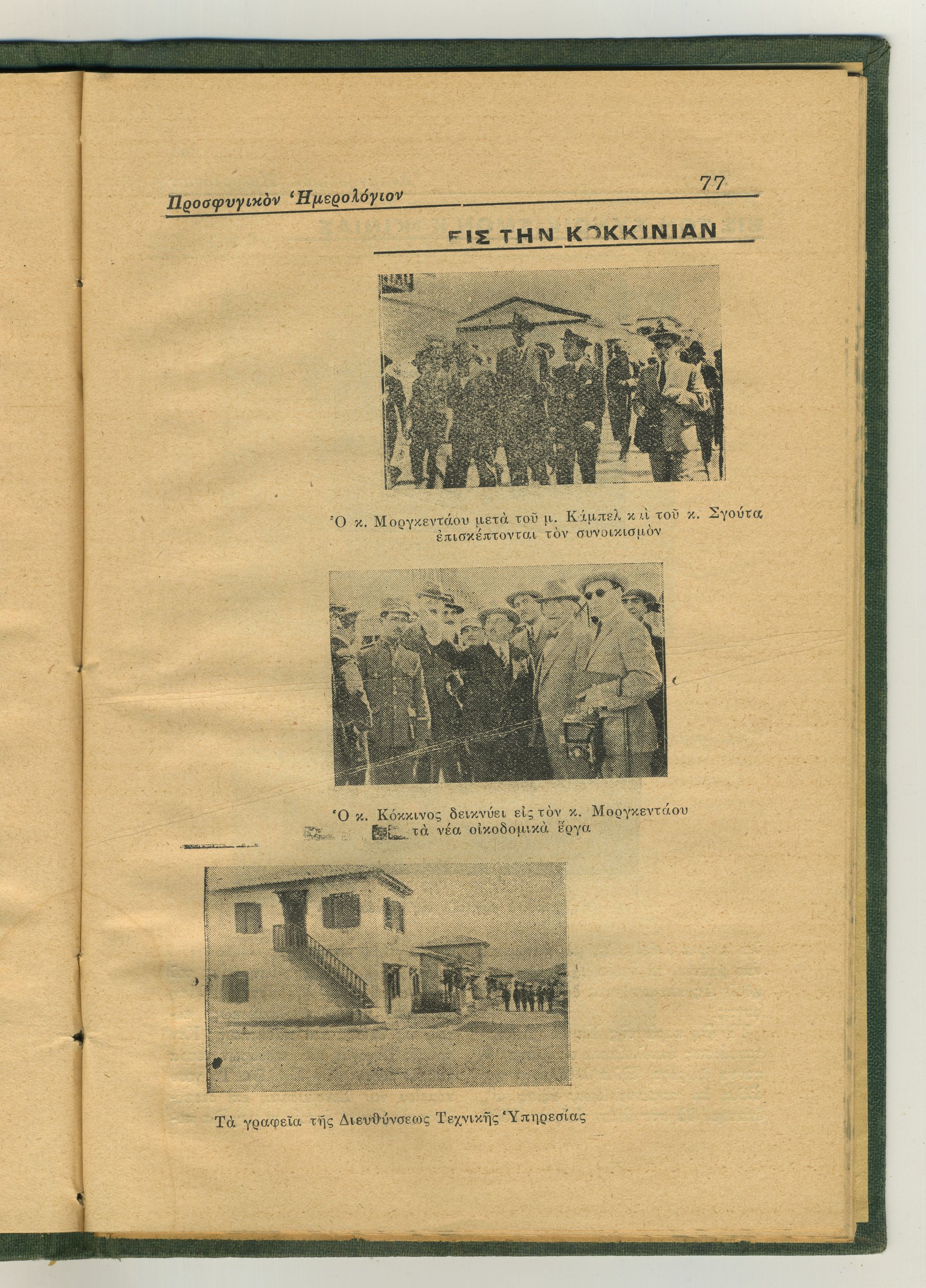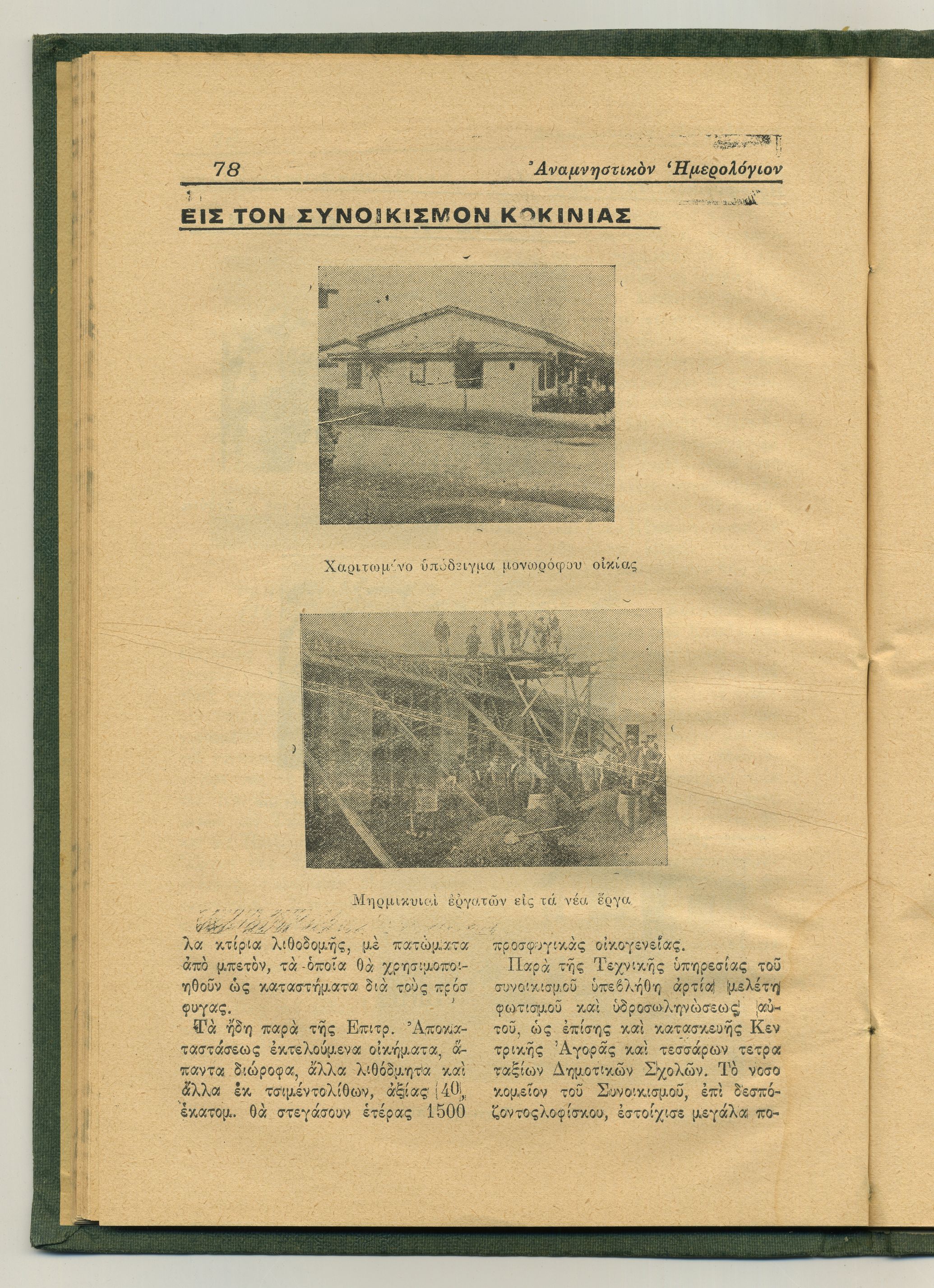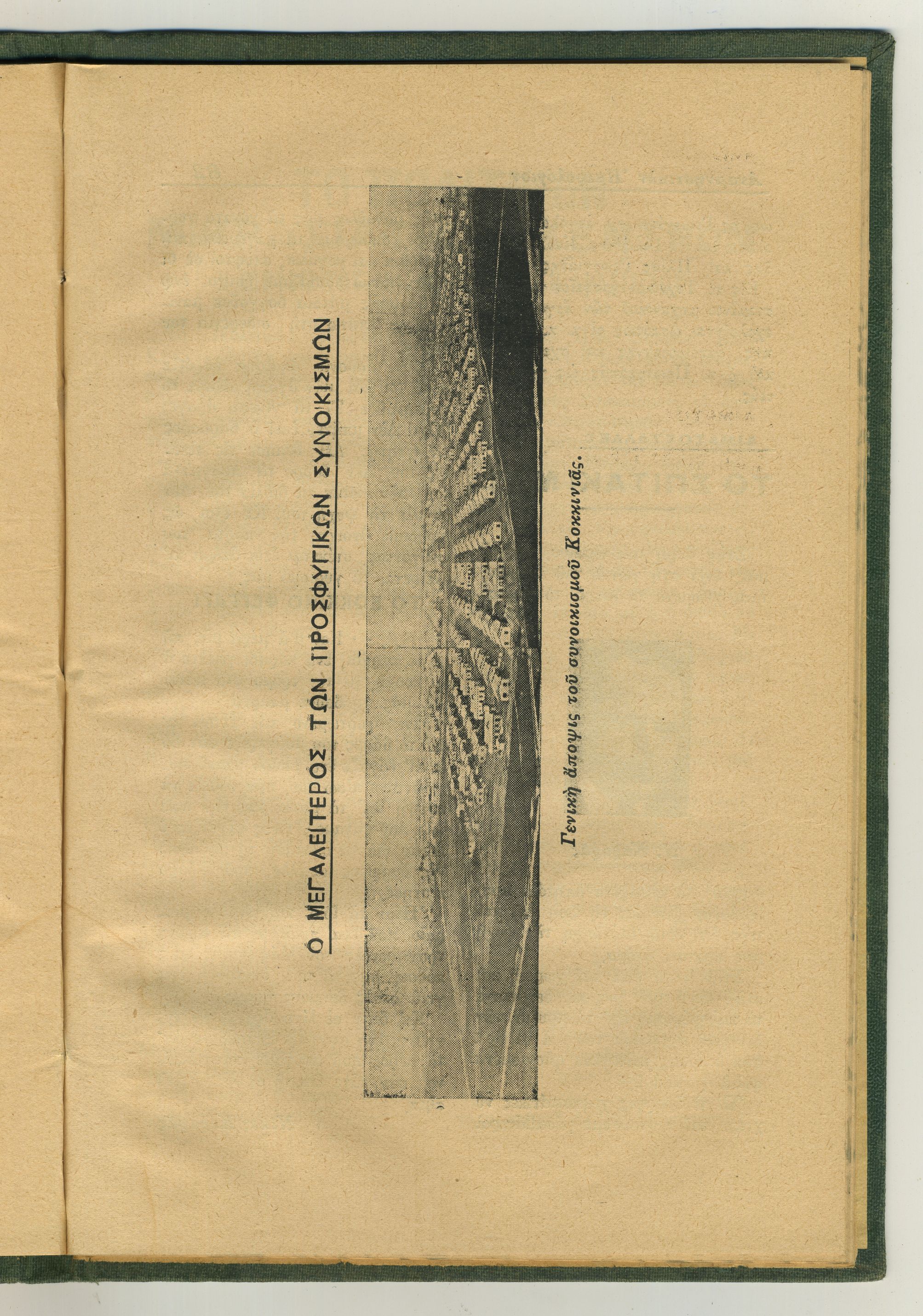The first organised residential settlement in Nea Kokkinia
‘Kokkinia! A main artery of refugee life: a wave of industriousness, dignity and solidarity. A miracle of aesthetics, urban planning and public hygiene. Behold this colossal settlement, a behemoth built out of patience, expense, and technical expertise. From June 18, 1923, when the settlement’s foundation stone was laid, until today, 7,850 rooms have been built, which translates into 1,150 houses’.
(Refugee Remembrance Journal, 1925)
One of the first tasks undertaken by the Refugee Relief Fund at the beginning of 1923 was to conduct a topographic survey of the northern limits of the Municipality of Piraeus, in the area along the Kanapitseri stream. A few years later this area would constitute the southern part of what eventually became the Municipality of Nea Kokkinia. The settlement’s foundation stone was laid on June 18, 1923, which has since been considered the establishment date of the first organised residential settlement in Nea Kokkinia. Soon, the first dwellings were erected. This first residential cluster consisted of 36 building blocks, with each block containing from 8 to 20 houses depending on its size. Each dwelling had a surface area of 25 square metres, divided into at least two rooms, with each room housing one family. Until its dissolution, the Refugee Relief Fund spent approximately 50,000,000 drachmas to construct 1,150 dwellings containing 7,850 rooms, which were promptly granted to Asia Minor refugees, mostly from Smyrna. The refugees themselves contributed to the development of their settlement: 3,480 refugees participated in the construction of the dwellings, among them 759 women. Of course, the construction of the settlement did not eliminate the need for makeshift shacks and hovels, which co-existed with the officially constructed dwellings and continued to rise in number.
The two land plots we see here accommodated two wooden houses with two rooms each, which means that in total they probably housed four families in 1923. Today all that’s left of those houses is their outline. In the thirty-six building blocks developed by the Refugee Relief Fund, we can see the evolution and the transformation of the area’s residents. Old refugees and new migrants from Eastern Europe and Asia co-exist in houses built in 1923 and 1924, highlighting the common thread which runs through the past 100 years: population movement.
Objects
